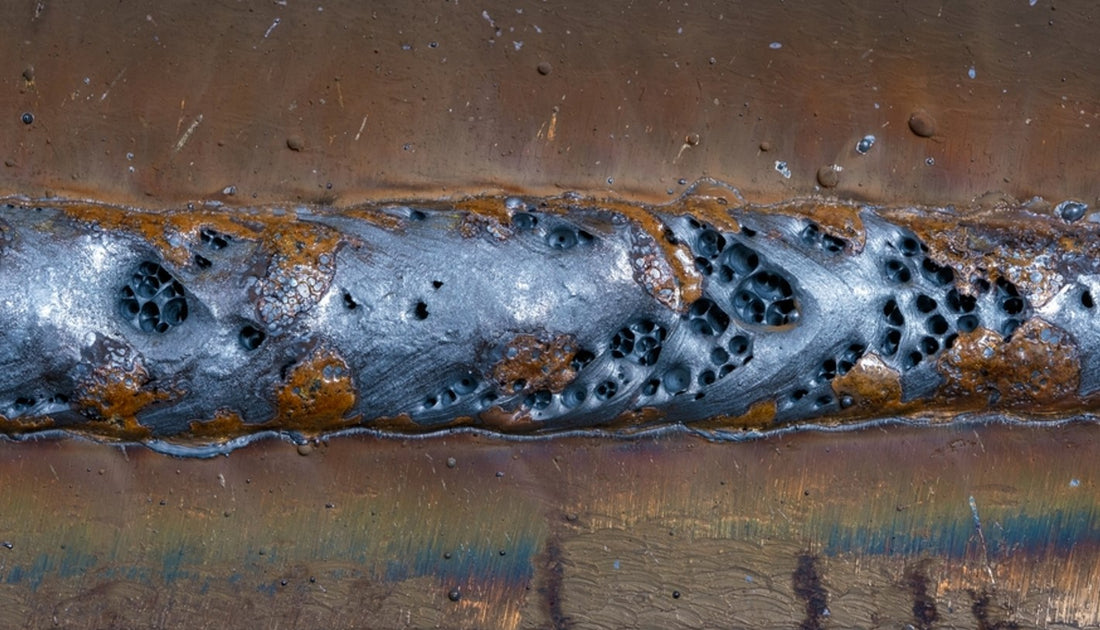Deciphering the Enigma of Porosity in Welding: Tips for Reducing Issues and Optimizing Quality
In the elaborate globe of welding, porosity remains a persistent challenge that can considerably impact the quality and stability of welded joints. As we dive right into the midsts of porosity in welding, revealing the keys to its avoidance and control will certainly be extremely important for specialists looking for to understand the art of high-quality weldments.
Understanding Porosity in Welding
Porosity in welding, an usual problem experienced by welders, refers to the presence of gas pockets or voids in the welded product, which can endanger the honesty and top quality of the weld. These gas pockets are commonly entraped throughout the welding process due to various factors such as improper securing gas, infected base products, or wrong welding specifications. The formation of porosity can damage the weld, making it prone to fracturing and deterioration, ultimately leading to architectural failings.
Comprehending the source of porosity is vital for welders to efficiently prevent its event. By acknowledging the significance of keeping appropriate gas shielding, making certain the tidiness of base materials, and enhancing welding settings, welders can dramatically reduce the probability of porosity formation. In addition, utilizing strategies like preheating the base product, employing appropriate welding techniques, and conducting thorough examinations post-welding can additionally aid in lessening porosity defects. On the whole, an extensive understanding of porosity in welding is necessary for welders to produce high-grade and resilient welds.

Typical Sources Of Porosity
When examining welding processes for potential top quality issues, understanding the common reasons of porosity is necessary for keeping weld integrity and protecting against architectural failures. Porosity, characterized by the existence of dental caries or gaps in the weld steel, can significantly compromise the mechanical buildings of a welded joint. One common cause of porosity is incorrect protecting gas insurance coverage. Poor securing gas circulation prices or inappropriate gas mixes can result in atmospheric contamination, leading to porosity formation.
Additionally, welding at inappropriate specifications, such as excessively high travel rates or currents, can produce too much turbulence in the weld pool, trapping gases and creating porosity. By attending to these typical causes with correct gas shielding, product preparation, and adherence to optimal welding criteria, welders can minimize porosity and improve the high quality of their welds.
Strategies for Porosity Prevention
Applying efficient safety nets is essential in decreasing the event of porosity in welding processes. One method for porosity avoidance is guaranteeing correct cleaning of the base steel prior to welding. Contaminants such as oil, oil, corrosion, and paint can lead to porosity, so complete cleansing using suitable solvents or mechanical techniques is essential.

Utilizing visite site top notch filler materials and protecting gases that are appropriate for the base steel and welding procedure can substantially decrease the danger of porosity. Furthermore, keeping correct welding criteria, such as voltage, existing, take a trip rate, and gas circulation rate, is important for porosity avoidance.
In addition, utilizing appropriate welding techniques, such as keeping a regular travel speed, electrode angle, and arc size, can assist stop porosity (What is Porosity). Ample training of welders to guarantee they comply with finest practices and quality assurance procedures is additionally crucial in decreasing porosity issues in index welding

Best Practices for Quality Welds
One key technique is preserving correct cleanliness in the welding location. Thoroughly cleaning up the work surface and surrounding location prior to welding can assist mitigate these concerns.
An additional ideal practice is to carefully select the suitable welding specifications for the details materials being joined. Proper specification option makes certain optimum weld infiltration, fusion, and overall quality. Using high-grade welding consumables, such as electrodes and filler metals, can considerably impact the last weld top quality.
Relevance of Porosity Control
Porosity control plays an essential role in guaranteeing the stability and high quality of welding joints. Porosity, defined by the existence of tooth cavities or voids within the weld metal, can significantly compromise the mechanical homes and structural honesty of the weld. Extreme porosity compromises the weld, making it more at risk to splitting, corrosion, and total failure under operational lots.
Effective porosity control is essential use this link for keeping the preferred mechanical properties, such as toughness, ductility, and strength, of the bonded joint. What is Porosity. By lessening porosity, welders can enhance the general quality and reliability of the weld, making sure that it fulfills the performance demands of the desired application
Furthermore, porosity control is crucial for achieving the wanted aesthetic look of the weld. Too much porosity not only weakens the weld but likewise takes away from its aesthetic appeal, which can be critical in sectors where aesthetic appeals are vital. Proper porosity control strategies, such as using the appropriate securing gas, controlling the welding specifications, and making certain proper tidiness of the base products, are essential for producing top notch welds with marginal defects.

Verdict
In conclusion, porosity in welding is a typical issue that can compromise the high quality of the weld. By recognizing the reasons for porosity and applying appropriate prevention methods, welders can lessen flaws and accomplish greater quality welds. It is vital to regulate porosity in welding to ensure the stability and stamina of the end product. Executing finest methods for porosity control is critical for achieving optimal welding results.